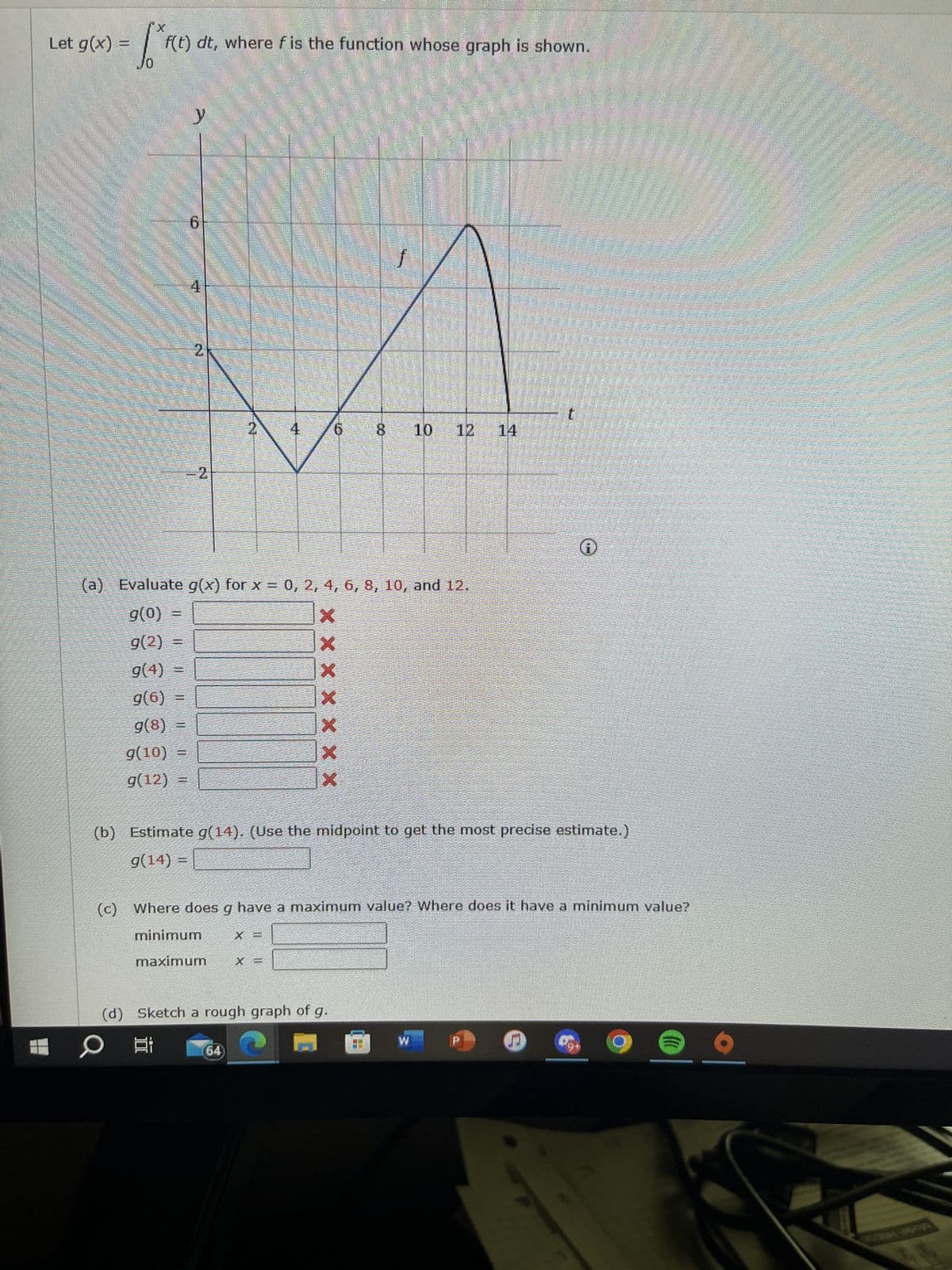- H -S* F f(t) dt, where fis the function whose graph is shown. Let g(x) = g(0) = g(2) = g(4) = g(6) g(8) = g(10) = g(12) = IL 6 = 4 II 2 2 (a) Evaluate g(x) for x = 0, 2, 4, 6, 8, 10, and 12. 2 4 (64) X = 6 X = X X X X X X X + (b) Estimate g(14). (Use the midpoint to get the most precise estimate.) g(14) = X (c) Where does g have a maximum value? Where does it have a minimum value? minimum maximum (d) Sketch a rough graph of g. 8 10 12 14 H t S (9+ O
- H -S* F f(t) dt, where fis the function whose graph is shown. Let g(x) = g(0) = g(2) = g(4) = g(6) g(8) = g(10) = g(12) = IL 6 = 4 II 2 2 (a) Evaluate g(x) for x = 0, 2, 4, 6, 8, 10, and 12. 2 4 (64) X = 6 X = X X X X X X X + (b) Estimate g(14). (Use the midpoint to get the most precise estimate.) g(14) = X (c) Where does g have a maximum value? Where does it have a minimum value? minimum maximum (d) Sketch a rough graph of g. 8 10 12 14 H t S (9+ O
Algebra & Trigonometry with Analytic Geometry
13th Edition
ISBN:9781133382119
Author:Swokowski
Publisher:Swokowski
Chapter5: Inverse, Exponential, And Logarithmic Functions
Section5.3: The Natural Exponential Function
Problem 1E
Related questions
Question

Transcribed Image Text:X
Let g(x) = f*
f(t) dt, where fis the function whose graph is shown.
W
PENS
O
y
HESHE
တယ်နော
4
နောက်ဆုံး
2
2
(a) Evaluate g(x) for x = 0, 2, 4, 6, 8, 10, and 12.
g(0)
g(2)
g(4)
g(6)
g(8)
g(10)
g(12) =
2
4
XXXXXXX
64
(d) Sketch a rough graph of g.
f
(b) Estimate g(14). (Use the midpoint to get the most precise estimate.)
g(14) =
(c) Where does g have a maximum value? Where does it have a minimum value?
minimum
maximum
10
20
W
t
♫
9 50
Expert Solution
This question has been solved!
Explore an expertly crafted, step-by-step solution for a thorough understanding of key concepts.
This is a popular solution!
Trending now
This is a popular solution!
Step by step
Solved in 5 steps with 6 images

Recommended textbooks for you

Algebra & Trigonometry with Analytic Geometry
Algebra
ISBN:
9781133382119
Author:
Swokowski
Publisher:
Cengage

Algebra & Trigonometry with Analytic Geometry
Algebra
ISBN:
9781133382119
Author:
Swokowski
Publisher:
Cengage